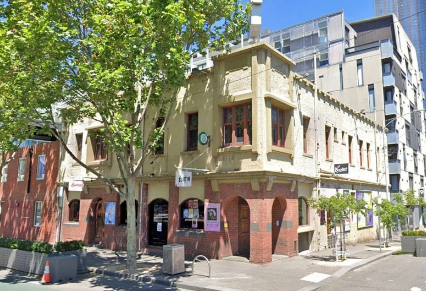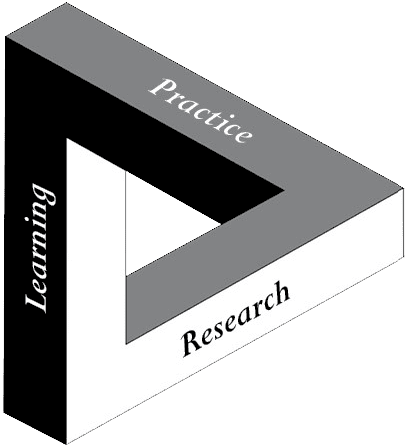I’m trained in community psychology. Established in 1969 in response to overtly clinical models of psychology, community psychology was one of the first disciplines to take a socioecological approach. Community psychology aims to promote positive change, health, and empowerment at the individual, organisational and community levels.
What matters to me are the principles and values on which the discipline is based:
Social justice. Action-oriented research. Global in nature. Influencing public policy. Working for empowerment. Multidisciplinary in focus. Celebrating culture. Preventing harm. Behaviour in context. Social action. Supporting community strengths. Reducing oppression. Promoting well-being. Scientific inquiry. Honouring human rights. Respecting diversity.
Practitioners of community psychology work in the following ways:
- We seek to expand ‘helping’ beyond traditional psychotherapy to promote wellness.
- We engage in action-oriented research to develop, implement, and evaluate programs.
- We base our work on a scientific foundation to better understand the multiple influences of the social environment on health and wellness
- We build collaborative relationships with community members, groups, and organizations to solve social problems.
- We consult with and provide tools to organizations to build capacity to address social problems such as exploitation and victimization.
- We analyse government, civic life, and workplace settings to understand and improve fair and diverse participation.
- We fight oppression, work to reduce social inequalities, and work with marginalised peoples toward their empowerment.
The WHO Healthy Cities Framework, which I have used for 20 years, aligns very strongly with a community psychology approach. Most of the factors that affect health and wellbeing occur outside of the health sector, in domains such as infrastructure planning, urban design, architecture, the business sector, developers, environment, art, and culture (Ashton 1992). The Healthy Cities approach is based on the recognition that city and urban environments affect citizens’ health, and that healthy municipal public policy is needed to effect change (Ashton, 1992). Health and well-being must be planned and built ‘into’ cities; this process must be seen and owned as everyone’s business. Political endorsement is seen as crucial to ensuring intersectoral collaboration. Systems for participatory decision-making must be developed to ensure that all voices are heard, especially those of marginalised people (Baum 1993).
Personal Foundations
I’m the son of an architect and a schoolteacher. My parents, both British, were travellers. They met and married in 1959 whilst working in Kuwait and returned to the UK in 1960. From each parent I absorbed an interest in the physical and built environment, civic participation, learning, debate, travel, questioning and social issues.
In 1967 I migrated with my family to, Perth, Western Australia, where my father had been offered a position with the WA Public Service. We benefited greatly from the ‘White Australia Policy’ and the assisted migration program that Australia offered other Commonwealth countries. My father still lives in the house that my parents purchased on our arrival.
Early years in Australia were a rich combination of outdoor exploration, music, caravanning trips, and schooling. I grew up deeply attached to Australian landscapes and always held some sort of understanding of Indigenous peoples’ belonging to place. I lived with a strong sense of safety, stability, intellectual stimulation and belonging to my local neighbourhood in an inner Perth suburb. I attended excellent local public primary and secondary schools. After school, I would roam the streets and parks on my bike or roller-skates. Our home was full of artefacts from my parents’ years of living and travelling through the Middle East.
During my teenage years I became increasingly hungry for travel and would watch the weekly Qantas 747 fly to London every Sunday afternoon. During this time, my parents became actively involved in supporting refugees and people seeking asylum. After abandoning an unfulfilling Engineering degree in my second year, I found a job and flew to London shortly before my 20th birthday. I spent the next 14 months backpacking around the UK and Europe, hitch-hiking, and working in a range of jobs – from silver-service waiter in London to farm hand in Greece. During this time, my senses were opened up to different worlds: of histories, peoples, buildings and urban forms, language, mythology, ecology, culture, philosophy — and psychology.
In mid-1985, some months after my return to Australia, I found an outlet for my restless intellectual energy by enrolling in a Bachelor of Applied Science (psychology) course at Curtin University in Perth. Looking back, I was lucky to join what I now think was Australia’s best psychology degree program. The course provided a firm grounding in sociology, history and the philosophy of science. I specialised in organisational and community psychology.
Professional development
Life since then has been a rich adventure. Upon graduation, I moved to Darwin and, for two years, helped to build community-based HIV support services. Following on from this, for three years I worked in Sydney for the Brain Injury Association of NSW. As Community Development Worker, I assisted people who have had a brain injury, their family and friends to obtain emotional support; develop self-advocacy skills; extend peer support networks; develop sense of community; and achieve individual and collective empowerment.
In 1996, after a year’s traveling overseas, I moved to Melbourne to commence my doctoral research in community psychology. Using an action research, adult education approach, I investigated the extent to which the models of adult education I had used in HIV and brain injury – peer education and advocacy training – could be used to encourage average, ‘non-political’ citizens to engage in civic activity aimed at changing environmental policy. This research was important in that it demonstrated the impact of identifying the levels of skills people already have, the ways in which groups can work together to resolve issues, and the power that can be transferred to individuals and groups who previously perceived themselves as excluded from decision making and effective action. Importantly, it also introduced me to a group of older citizens interested in organizing to protect their urban heritage, which led to my renewed interest in urban planning.
After completing my PhD in community psychology, I had eventually found work in September 2000 in the Public Health Division of the then Victorian Department of Human Services. I was part of a small Local Government Partnerships team that was charged with working with the Victorian local government sector to develop a robust, evidence-informed framework to guide municipal public health planning. Called Environments for Health: Promoting Health and Wellbeing through Built, Social, Economic and Natural Environments, the framework drew directly on my doctoral research on environmental adult education, which engaged citizens to in participatory action research to build on the relationship between the built environment and people’s health, wellbeing and sense of belonging. Environments for Health also drew heavily on the World Health Organisation’s Healthy Cities framework, which had been co-founded by Leonard Duhl MD, a psychiatrist and Professor of Public Health and Urban Planning at UC Berkeley.
In 2001, my doctoral dissertation was awarded the American Psychological Association’s Emory L. Cowen PhD Dissertation Award for the Promotion of Wellness. Having spent four years in penury as an older, full-time doctoral student, this award came as a tremendous honour and thrill. Visiting the APA’s 2001 conference in San Francisco to receive the award, I discovered that Prof Duhl was based just across the Bay in Berkeley. His career, as a social entrepreneur who combined an interest in psychological wellbeing and urban planning, resonated very strongly with me.
On my return to Melbourne I wrote to Prof Duhl, expressing an interest in working with him. Len wrote back very enthusiastically and advised that if I could find a way to fund my visit, he would be glad to host me. He recommended that I apply for scholarship such as a Fulbright. This I did in August 2002, with strong support from my work colleagues, including the Director of Public Health. In September 2003, three days after turning 40, I found myself flying to Berkeley.
I was privileged to spend seven months at Berkeley’s School of Public Health. Working alongside Len, I investigated the World Health Organisation’s Healthy Cities approach, which has been used by thousands of cities and municipalities world-wide. I was interested to learn how Healthy Cities initiatives had fostered community empowerment, as well as an individual and collective sense of attachment and belonging to ‘place’. My Fulbright research program aimed to add value to Victorian municipal public health planning, Healthy Cities and other community building programs, and research in community psychology, by examining the role that community cognitions (sense of place, sense of community, place attachment) might play in community building, strategic planning and indicator development. The research was also intended to examine the impact that these community cognitions could have on general policies directed to enhance social well-being.
My Fulbright experience involved giving presentations and colloquia at several Universities across the US; interviewing key informants across 20 Californian Healthy Cities and Communities initiatives; conducting case studies, document analysis and other research; collaborative dialogue with Healthy Cities personnel and academics across the US; co-teaching two courses on ‘international health policy and planning’, and ‘cities and health’; a week’s invited residency at Vanderbilt University; participating in Fulbright conference in Washington DC; reflecting; and writing. Len, who had just turned 80, told me that my visit had helped him appreciate the value of his life’s work, and that he was now passing on the baton to someone who reminded him of a younger version of himself.
Since returning from Berkeley in April 2004, my Fulbright experience has informed and inspired virtually every domain of my professional life. This includes the interdisciplinary postgraduate planning degree that I helped establish at Deakin University; four Healthy Cities and Communities Short Courses; co-facilitation of the Deakin+DHS Partnership; the Regional Health & Wellbeing Strategy that I led at the Department of Health; and the Place, Health and Liveability policy research partnership that I established with the University of Melbourne. (This partnership has since evolved into the Healthy Liveable Cities Group at RMIT University.) In 2016, work emanating from this research partnership was included in a special edition of the Lancet on urban design, transport and health, and was presented to the UN 71st General Assembly in NY. The Liveability partnerships that we forged with local councils have generated fine-grain evidence on how people’s lives as impacted by their degree of local access to transport, good food, open space, employment, affordable housing, walkable neighbourhoods and local amenities. This has informed municipal public health planning indelibly. Citizens are using Liveability evidence to engage more meaningfully in local planning decisions. Plan Melbourne and the Victorian Public Health and Wellbeing Plan are anchored on our Liveability framework. We are currently in partnership with the Bangkok Metropolitan Authority to generate local liveability measures and supportive data infrastructure.
In 2017 I spent several weeks at Berkeley on a Fulbright Alumni Initiative Grant, as an Urban Scholar with the UN Global Compact – Cities Programme. I explored opportunities for Berkeley to become delivery hub for the Programme and returned with a ‘live list ‘of ten interested organisations.
My volunteer experience is also heavily grounded in Fulbright work. I was a member of the Victorian Fulbright selection committee for five years, whilst also engaging heavily in the Victorian Chapter of the Australian Fulbright Alumni Association. Since 2015 I have been AFAA’s national President.




